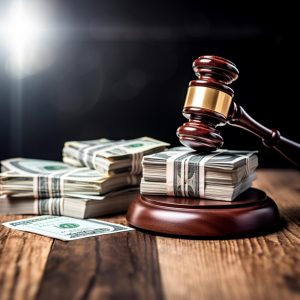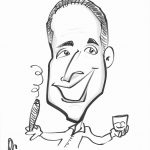
Patent Infringement
Understanding Pandora’s Explosive Box
INTRODUCTION
In this article we look at patent infringement.
More specifically, we look at patent infringement from a client’s perspective.
What are you getting into?
How did you get there?
Now that you’re here, what are you going to do?
Patent infringement sounds like a simple topic.
As with all things intellectual property however, patent infringement is not simple.
WHAT IS IN A PATENT?
To understand what patent infringement is, you need to understand the parts of a patent.
A patent is typically made up of the following parts.
Abstract – typically a one hundred fifty-word summary explaining the invention.
Title – the title gives a reader a hint about an invention’s main idea.
Field of the invention – in which art / science area does this invention relate?
Summary – a few sentences expounding the invention’s main idea.
Background – what is the prior art and what was wrong with the prior art?
Description – a detailed explanation of the invention and it’s components / parts.
Drawings – if an invention admits of illustration, drawings must be provided.
Claims – a statement defining the invention to which exclusive rights are claimed.
When it comes to patent infringement, the claims are key.
The claims are not everything, however.
Patent claims must be able to stand on their own.
The remaining parts of a patent provide context for the claims.
Context is important to understand what an invention is.
Context is also important to understand how broadly an invention should be protected.
The other components might not be used to construe the claims.
However the other parts of a patent help paint a picture.
The written description can be used to help explain what words in the claims mean.
WHAT IS PATENT INFRINGEMENT?
This is both simple and difficult to explain.
On the one hand, patent infringement is a reproduction of what is stated in the claims.
The reproduction is of course unauthorized by the patentee.
On the other hand, we need to understand what is stated in the claims.
What is being reproduced?
Moreover, most “infringers” don’t tailor their activities around your claim wording.
Patent infringement is that the activity covered in patent claims are being reproduced.
Someone not authorized by the patentee is practising what is stated in the patent claims.
How can you be certain an activity falls within the patent claim wording?
In rare cases, you may see an “identical knock-off”.
In some cases it is not difficult to make a case for patent infringement.
Those cases deal with identical replication / reproduction.
Most cases do not involve exact reproduction, however.
A patentee cannot control what offending actions a third party might take.
Moreover, it is impossible for claims to cover every conceivable form of activity.
Claims are limited for many reasons.
These reasons include budgetary constraints, as well as time constraints.
Moreover, claims are limited by existing prior art.
Limitations also arise from words used, selected intentionally or not.
Sometimes this can be difficult for clients to understand.
Patent agents have no control over many of these factors.
WHAT DOES A CLAIM MEAN?
If you get all the way to patent litigation, you’ll discover the wording in the claims is key.
Both sides will conjure so-called experts of every stripe.
These so-called experts will analyze thoroughly what is written in the claims.
They will also make claims about what was known in the prior art and when.
Patent claims are essentially a contract.
Patent claims define a monopoly sought by the patentee.
Anything outside that stated monopoly does not constitute patent infringement.
How do you know if something is outside the stated monopoly?
You must dissect and understand fully what the words in the claims mean.
How is the meaning of a word determined?
Words in the claims are presumed to have their ordinary dictionary meaning.
Sentences in the claims are presumed to have their ordinary grammatical construction.
Even these two factors can be incredibly incendiary and difficult.
Scholars and experts can argue over dictionary meanings and grammatical construction.
Where there is doubt, there can be recourse to the written description.
A patent description is an opportunity for a patentee to define their own lexicon.
A patentee can choose to make certain words have specific meanings.
A patentee can also limit the meanings of words and phrases.
A patentee can also provide context for information stated in the claims.
The description can help to construe patent claims and help define their scope.
WHAT IS AN ESSENTIAL ELEMENT?
Claims are made up of essential and non-essential elements.
Patent infringement requires reproduction of not just the claim elements.
Patent infringement requires reproduction of the essential elements in a claim.
What makes a claim element essential?
What makes a claim element non-essential?
To be an essential element, there can be no substitution.
In other words, the element is essential to the invention’s operability.
If an element can be easily substituted, that specific element is not essential.
It does not matter if a third party reproduces non-essential elements.
For patent infringement the third party must reproduce all the essential elements.
There is no patent infringement unless all essential claim elements are reproduced.
If all essential elements have not been reproduced, there is no patent infringement.
Each claim is subjected to an analysis to determine essential elements.
CAN A CLAIM “FAIL”?
Technically claims don’t fail.
But there can be some damaging problems with claims.
Patent infringement allegations permit third parties to raise certain defences.
One of those defences is that a claim or many claims may be invalid.
A patent claim may be invalid because it is not novel considering the prior art.
Another reason for invalidity is a claim may be obviousness considering the prior art.
There can be other reasons as well.
Claim invalidity exonerates a third party from patent infringement allegations.
Sometimes one invalid claim may invalidate other claims.
If a broad claim is invalid, no claim depending therefrom can be valid.
The reality is that all parties are attempting to hit a moving target.
The patentee is trying to create and protect an invention.
The patent agent is trying to define that invention.
A patent examiner is trying to find that invention in the prior art.
A patent examiner also tries to analyze the invention for other defects.
A third-party however, has no interest in maintaining that patent.
A third-party is free to hope for bad outcomes in each of the above instances.
Patent infringement allegations are fighting words.
A third-party is entitled to defend themselves as fiercely as possible.
SHOULD YOU FIGHT?
Fighting over patent infringement also involves many factors.
For a patentee, there are budgetary considerations.
A patentee must also consider time and effort expounded on enforcement.
Those considerations are balanced against market share and market damage.
For a third-party, it is unpalatable to be accused of any bad conduct.
There are considerations of intention, budget, and resources.
Some will fight on principle.
Each case is different and requires thoughtful consideration.
Patent infringement is neither a friendly nor inexpensive battlefield.

Readers of this article should be aware of the following regarding article links.
Over time any links above above will naturally expire and become non-functional.
Printouts and PDF records are recommended.
Readers can otherwise historically preserve information presented in the above links.
None of the information in any of our articles constitutes legal advice.
Nor do our articles constitute advice as registered patent and trademark agents.
Pnc IP Group bears no responsibility for the accuracy of third party links.
References are as they existed at the time of writing.
This includes legislation, regulations, practice notices and practice manuals quoted.
Pnc IP Group bears no responsibility for updates and changes.
This includes changes to legislation, regulations, practice notices, and practice manuals.
All readers accept these articles as being written accurately at publication time .
All readers accept these articles in the form they were published.
All readers accept the accuracy and correctness of any article vary.
Variables include time, statutory / regulatory amendment, case law, and practice.
All readers are forewarned to obtain independent legal advice.
All readers are forewarned to obtain independent registered patent agent advice.
All readers are forewarned to obtain independent registered trademark agent advice.
Images for this article, were generously provided by licence through Freepik.com.
AI Image generation by gbob via Freepik.com.
Visit our Services page to learn more about Pnc IP Group’s Patent services.
If you have questions regarding the above, feel free to contact us.
Any patents or trademarks referenced are owned by their respective owners.
Questions regarding this article can be directed to Tapas Pain.
Readers can access Tapas Pain on LinkedIn as well.
Pnc IP Group are licensed lawyers and registered patent and trademark agents.
Pnc IP Group has served the greater York Region, greater Toronto area since 2003.
Pnc IP Group is located in Vaughan, Ontario, and offers in-person visits by appointment.
Call us and book your appointment today, or speak with us by telephone anytime.
Your calls are always welcome, and never hesitate to ask us your questions.
These articles and opinions do not express or constitute legal advice.
You can also often find us on search engines like Google.
Use any of the following search terms.
Intellectual property lawyer Toronto, intellectual property law firm Toronto.
Patent filing services, patent application services, patent services Canada
Patent lawyer Canada, patent lawyer Toronto, patent agent Canada.
Trademark application Canada, trademark lawyer Toronto, trademark lawyer Canada.
You can also often find us on other search engines.
Use any of the following search terms.
Intellectual property lawyer Toronto, intellectual property law firm Toronto.
Patent filing services, patent application services, patent services Canada
Patent lawyer Canada, patent lawyer Toronto, patent agent Canada.
Trademark application Canada, trademark lawyer Toronto, trademark lawyer Canada.



